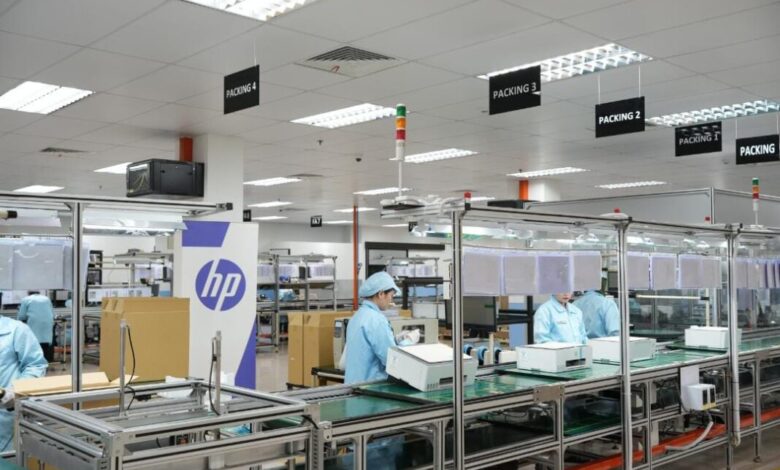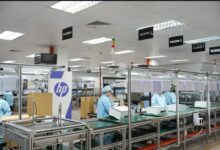
batambisnis.com – Batam, one of Indonesia’s fastest-growing industrial hubs, has become a prime destination for global investors seeking to enter Southeast Asia’s booming manufacturing market. Located strategically near Singapore and along the Strait of Malacca, Batam offers significant advantages such as tax incentives, skilled labor, developed infrastructure, and a growing demand for export-oriented industries. For those who are considering starting operations in this vibrant city, understanding how to launch a manufacturing business in Batam is crucial. This step-by-step guide will provide clarity for international entrepreneurs aiming to establish a solid foothold in the region.
Why Choose Batam for Manufacturing?
Before diving into the steps, it’s important to understand why Batam has become a hotspot for global investors.
- Strategic Location – Batam is less than 20 kilometers from Singapore, allowing manufacturers to access international shipping routes and a global market with ease.
- Tax Incentives and Free Trade Zone (FTZ) – Batam is part of Indonesia’s Free Trade Zone, providing reduced import duties and other fiscal benefits.
- Skilled Workforce – The island has a pool of trained workers experienced in electronics, shipbuilding, automotive, and precision engineering.
- Growing Industrial Ecosystem – From industrial parks to logistic services, Batam’s infrastructure supports large-scale manufacturing operations.
- Competitive Costs – Compared to Singapore or Malaysia, Batam offers lower labor costs and more affordable industrial land, making it highly attractive for cost-sensitive investors.
These advantages make Batam an appealing choice for those researching how to launch a manufacturing business in Batam and compete in global markets.
Step 1: Conduct Market Research and Feasibility Study
The first step in how to launch a manufacturing business in Batam is conducting thorough research. Global investors should analyze:
- Industry Demand – Determine which sectors are thriving in Batam, such as electronics, textiles, shipbuilding, automotive, or food processing.
- Competition Analysis – Identify existing players, their market share, and their strategies.
- Supply Chain Availability – Check the accessibility of raw materials, components, and suppliers.
- Export Potential – Evaluate how your products can reach ASEAN, China, or Europe using Batam’s strategic logistics.
Without this critical assessment, it becomes difficult to minimize risks and maximize opportunities.
Step 2: Understand Indonesia’s Business Regulations
For investors wondering how to launch a manufacturing business in Batam, understanding Indonesia’s legal framework is essential. Foreign companies can establish entities through:
- PT PMA (Foreign-Owned Limited Liability Company) – The most common legal structure for international investors.
- Joint Ventures – Partnering with local companies to share capital, expertise, and compliance responsibilities.
Batam’s Free Trade Zone Authority (BP Batam) provides guidance and permits. Regulations often cover:
- Foreign ownership limits.
- Licensing requirements for manufacturing.
- Labor laws, including wages and working hours.
- Environmental impact assessments.
By securing the proper permits, you set a solid foundation for growth.
Step 3: Choose the Right Location in Batam
One of the most important steps in how to launch a manufacturing business in Batam is selecting the ideal industrial zone. Popular areas include:
- Batamindo Industrial Park – Home to electronics and precision manufacturing companies.
- Kabil Industrial Estate – Known for oil, gas, and shipyard industries.
- Mukakuning Industrial Area – Strategically designed for export-oriented businesses.
- Tanjung Uncang – Specialized in heavy industries such as shipbuilding and fabrication.
Factors to consider:
- Proximity to ports and airports.
- Availability of skilled labor nearby.
- Infrastructure facilities like electricity, water, and waste management.
- Cost of leasing or land acquisition.
Choosing the right zone can greatly influence efficiency and profitability.
Step 4: Secure Licenses and Permits
To comply with Indonesian law, investors must apply for necessary permits through the Online Single Submission (OSS) system. These include:
- Business Identification Number (NIB)
- Environmental and Building Permits
- Operational Licenses specific to manufacturing sectors
The process may seem complex, but hiring a local consultant or legal advisor can simplify the journey of how to launch a manufacturing business in Batam.
Step 5: Build Partnerships and Networks
Success in Batam often depends on building the right local connections. Consider collaborating with:
- Local suppliers for raw materials.
- Logistics providers for export services.
- Government agencies for incentives and policy updates.
- Trade associations for networking with other manufacturers.
Building strong networks ensures smoother operations and reduces challenges for global investors entering Batam’s market.
Step 6: Hire and Train a Skilled Workforce
When learning how to launch a manufacturing business in Batam, workforce planning cannot be overlooked. Batam has a strong labor pool, but training programs help align workers with global standards. Employers should:
- Provide technical training to improve efficiency.
- Ensure compliance with Indonesian labor laws.
- Develop employee welfare programs to retain skilled staff.
- Introduce modern management systems to optimize productivity.
A well-trained workforce will enhance product quality and competitiveness.
Step 7: Set Up Infrastructure and Supply Chain
Once permits and workforce are in place, the next step in how to launch a manufacturing business in Batam is establishing operational infrastructure:
- Factory Construction or Rental – Depending on budget and time.
- Machinery Procurement – Import equipment under Batam’s FTZ benefits.
- Supply Chain Management – Build strong relationships with both local and international suppliers.
- Logistics Planning – Take advantage of Batam’s ports for seamless export.
Efficient infrastructure ensures timely production and delivery, strengthening your global market presence.
Step 8: Leverage Government Incentives
Batam offers various incentives for foreign investors, making the journey of how to launch a manufacturing business in Batam even more appealing. These include:
- Tax holidays for certain industries.
- Reduced import duties for raw materials and machinery.
- Simplified customs clearance under the Free Trade Zone scheme.
- Investment allowances for businesses that reinvest profits locally.
By leveraging these benefits, investors can reduce operational costs and improve profit margins.
Step 9: Implement Sustainability and Compliance
Global investors must also prioritize sustainability when considering how to launch a manufacturing business in Batam. Authorities emphasize:
- Environmental compliance (waste management, emissions control).
- Occupational health and safety standards.
- Corporate social responsibility initiatives that support local communities.
A responsible business approach not only avoids penalties but also enhances brand reputation globally.
Step 10: Scale and Expand Internationally
After setting up operations, investors should plan for growth. Batam’s location makes it easier to:
- Export products to Singapore, Malaysia, and beyond.
- Expand production capacity by acquiring more land or facilities.
- Diversify into new manufacturing sectors such as renewable energy, electric vehicles, or advanced electronics.
- Establish research and development (R&D) centers to innovate new products.
The key to long-term success in how to launch a manufacturing business in Batam lies in scalability and global competitiveness.
Common Challenges and How to Overcome Them
Even with advantages, investors may face hurdles in Batam. Some common issues include:
- Bureaucratic Delays – Licensing and permit approvals can take time. Hiring a reliable consultant can reduce delays.
- Infrastructure Gaps – While industrial parks are well-developed, certain areas may face electricity or water supply interruptions. Backup systems are advisable.
- Cultural Differences – Understanding Indonesian business culture and labor practices is essential for smooth operations.
- Currency Fluctuations – The Indonesian Rupiah can fluctuate against global currencies, so investors should plan financial strategies accordingly.
Knowing these challenges in advance helps global investors navigate how to launch a manufacturing business in Batam with confidence.
Future Outlook of Manufacturing in Batam
The future of Batam as a manufacturing hub is bright. Several trends will shape opportunities:
- Digital Transformation – Adoption of Industry 4.0 technologies such as automation, IoT, and AI.
- Sustainable Manufacturing – Growing demand for eco-friendly practices in production.
- Diversification – Beyond electronics and shipbuilding, sectors like pharmaceuticals, renewable energy, and automotive parts are gaining traction.
- Integration with ASEAN Market – As part of ASEAN’s free trade agreements, Batam-based manufacturers gain preferential access to over 650 million consumers.
For global investors exploring how to launch a manufacturing business in Batam, the long-term outlook is highly promising.
Conclusion
Batam has positioned itself as a gateway to ASEAN and global markets, offering strategic advantages for investors in manufacturing. By following these steps—market research, legal compliance, site selection, licensing, partnerships, workforce development, infrastructure setup, government incentives, sustainability, and expansion you can successfully establish operations.
For those seeking how to launch a manufacturing business in Batam, this guide highlights not only the procedural steps but also the opportunities awaiting in one of Southeast Asia’s fastest-growing industrial regions. With careful planning and execution, Batam can be the ideal launchpad for your global manufacturing ambitions.















2 Comments